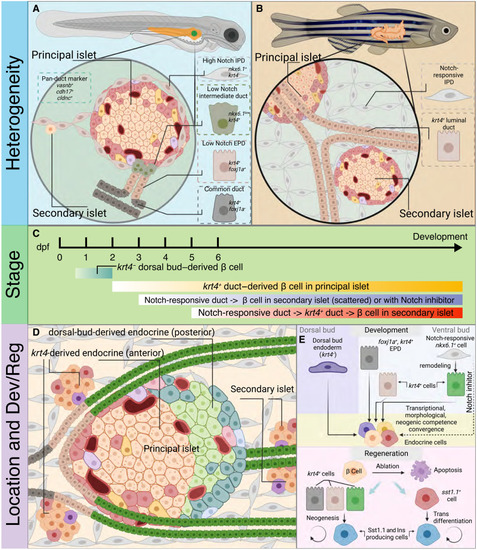|
Graphical summary describes the landscape of endocrinogenesis in zebrafish pancreas. (A) Illustration of zebrafish pancreas in larval and juvenile/adult stage. The schematic showing that in larval stage, the zebrafish ductal tree is composed of extrapancreatic duct (EPD) (foxj1a+/krt4+), intermediate duct (foxj1−/krt4+), and Notch-responsive intrapancreatic duct (IPD) (tp1+/krt4−); while in juvenile and adult, the krt4+ duct forms luminal structure extending to the pancreatic tail, which also contain Notch-responsive ductal cells located in the peripheral regions. (B) The sketch of zebrafish endocrinogenesis suggesting multiple phases of neogenesis that take place at various stages. (C) Schematic summary of the divergent origins and contributions of the krt4+duct in juvenile and adult pancreata. (D and E) The working model of β cell differentiation and insulin-producing cell regeneration. During development, the primitive islet is formed from the dorsal pancreatic bud, followed by krt4-derived duct-to-endocrine differentiation in the principal islet. The Notch-responsive duct does not naturally serve as the direct progenitor of endocrine cells but gradually undergoes transformation and assembles to become krt4+ luminal duct, which has neogenic competence and can differentiate into endocrine cells in the secondary islets throughout the development until the adult stage. After massive loss of β cells, the neurod1+/sst1.1+ endocrine cells would initiate reprogramming and up-regulate insulin expression for functional compensation.
|

